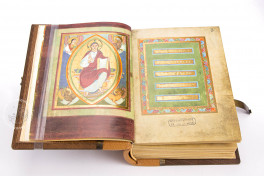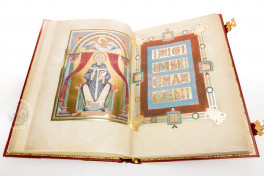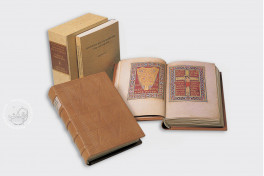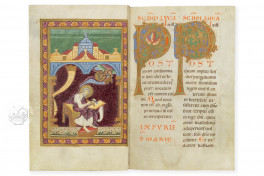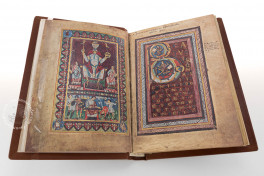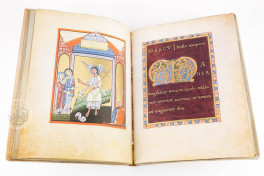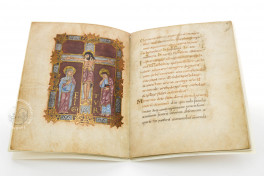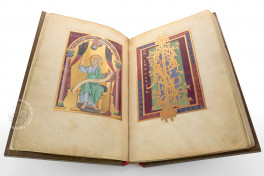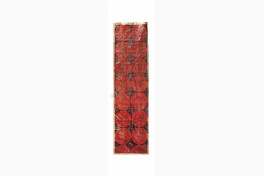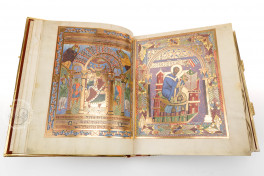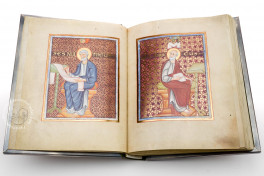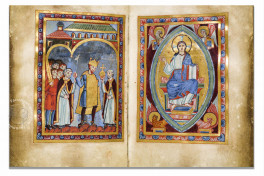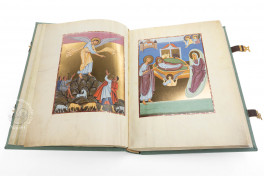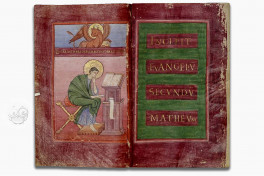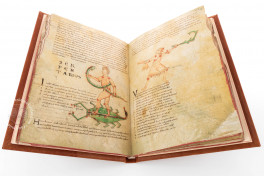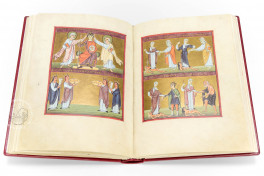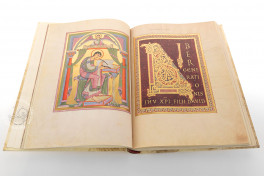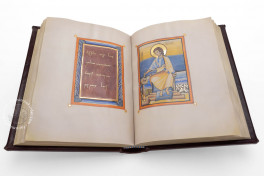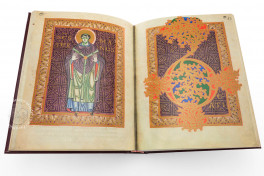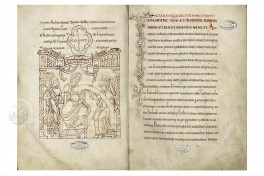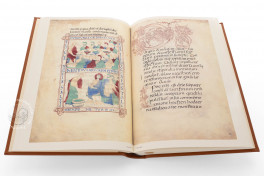Ottonian manuscripts date back to the 10th and 11th centuries, at a time when Germany and northern Italy were under the rule of the Ottonian, or Saxon, dynasty. During the magnificent Ottonian Renaissance, arts and architecture were characterized by simple, symmetrical motifs with highly humanized features.
Similar in appeal, Ottonian manuscript illumination was artful and sophisticated, often draped in gold leaf; bindings too were extremely lavish and elaborate. As illuminated manuscripts are known for being garnished and otherwise decorated in paint, gold, silver, or richly artistic borders, Ottonian manuscripts maintain a most refined reputation among collections of their kind.
Known to have been developed and produced in medieval monasteries where only professional scribes and other craftsmen resided, ancient illuminated manuscripts from this era espouse stories of ideology and religious plights largely influenced by Byzantine and Roman styles. From the poetic to the dramatic, classic narrations of political theory and dynastic power compile these Ottonian manuscripts.
Availed as largely liturgical, these artistic treasures were often commissioned by church leaders and well-represented in church practices including services, processions, and memorials. Rich in symbols, form, and color, Ottonian manuscripts have been described as rhythmic and well-designed, telling stories through visual and literary convergence at its best.

